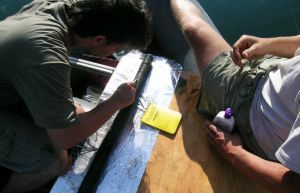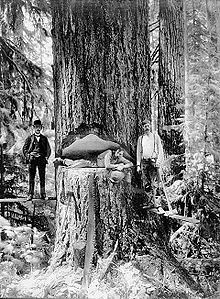
Publisher:
Bonnie King
CONTACT:
Newsroom@Salem-news.com
Advertising:
Adsales@Salem-news.com

~Truth~
~Justice~
~Peace~
TJP
Oct-19-2010 17:37

 TweetFollow @OregonNews
TweetFollow @OregonNews
Old Logging Practices Linked to High Erosion Rates
Salem-News.comU of O researchers say the landscape of the Rogue-Siskiyou National Forest is threatened by old logging and road-building practices; recent fires and rains have produced erosion rates four times higher than any previous periods over 2,000 years.
 Upper Squaw Lake. Photos: University of Oregon |
(EUGENE, Ore.) - While logging practices have improved dramatically since then, the damaged landscape -- the removal of low vegetation that helps to protect hillsides during fires and rain -- continues to pose a threat into the foreseeable future, said Daniel G. Gavin, professor of geography, and postdoctoral doctoral researcher Daniele Colombaroli.
Their research -- funded by the Swiss National Science Foundation and the UO -- involved the analyses of charcoal, pollen and sediment taken from 30-foot-deep cores drilled below Upper Squaw Lake in the Rogue River-Siskiyou National Forest.
Their findings, which provide a look at the impacts of fires over the last 2,000 years, appeared online Oct. 18 in the Early Edition of the Proceedings of the National Academy of Sciences.
The data, which provided for greater scrutiny than that of tree-ring records, allowed the researchers to analyze conditions at different time periods and compare soil conditions during fire and flooding events over time.
"There is a legacy of poor logging practices conducted decades ago," Gavin said. "Road building during that period was done with little concern for subsequent erosion. The soils were much more heavily impacted by that development compared to the prehistoric fires of the past. Our study shows that at least four times more erosion occurred on the landscape after the logging and floods of the 1960s compared to the most severe prehistoric fire. So we are dealing with a more delicate, less-resistant ecosystem in the majority of areas that has seen this logging."
Over much of the last 2,000 years, according to pollen records, soils in the forests of the region were naturally resilient, maintaining their abundance, through periods of drought, severe fire and moderate erosion events, the researchers noted. "This resiliency was reduced by road building, logging and major floods," they wrote.

That legacy of mid-century logging, said Colombaroli, a native of northern Italy who now is at the University of Bern in Switzerland, may be more of a concern than the occurrence of severe fires, which are strongly affected by climate.
"Fire is known now to be a natural component of the ecosystem, but it is not clear whether forests are able to quickly recover after intense fire if logging practices altered the natural dynamics of the forest, and if the hazard of severe fire can be reduced by, for example, controlled burnings," Colombaroli said.
Gavin and Colombaroli had sought to understand whether forests in this region have been subject to severe fire events before the 1800s, or whether light, low-intensity burns were typical. This information would place some severe fires in recent years, such as the 196,000-hectacre Biscuit Fire in 2002, into a longer-term context. The results pointed to a highly episodic pattern of fire, with periods of frequent fire during widespread and severe periods of drought (A.D. 900-1300) alternating with long periods with little fire (A.D. 1500-1800).
The 2000-year record shows how fire and erosion were linked in the past, and how some fires hundreds of years ago were severe enough to cause distinct erosion on hillsides.
"With data obtained on both the pattern of fire and erosion," Gavin said, "it's clear that severe fire is not a new threat to these forests, but what is a new to these forests is the logging-related erosion levels and the current species composition. How the current forest responds to severe fire, therefore, may differ from that in the past."
The findings, the authors noted, suggest that management strategies might well include approaches aimed at returning public forests to their natural resiliency to help reduce damage levels from fire and erosion. However, Gavin said, these particular findings should be considered place-specific.
"They don't apply widely throughout Oregon's forests," he noted. "The site is on the Oregon-California border, and is representative of what's called mixed conifer -- pines mixed with trees with shorter needles, especially Douglas-fir. This mix is common in southwest Oregon and northwest California, from I-5 west to near the coast."
Source: The University of Oregon, a world-class teaching and research institution and Oregon's flagship public university.
Articles for October 18, 2010 | Articles for October 19, 2010 | Articles for October 20, 2010




Salem-News.com:
googlec507860f6901db00.html
Terms of Service | Privacy Policy

All comments and messages are approved by people and self promotional links or unacceptable comments are denied.
[Return to Top]
©2025 Salem-News.com. All opinions expressed in this article are those of the author and do not necessarily reflect those of Salem-News.com.